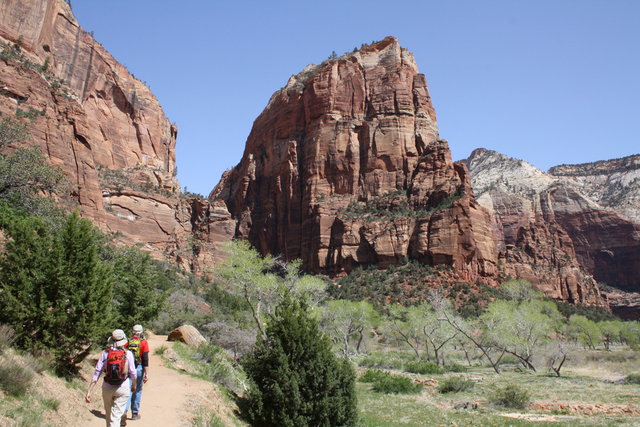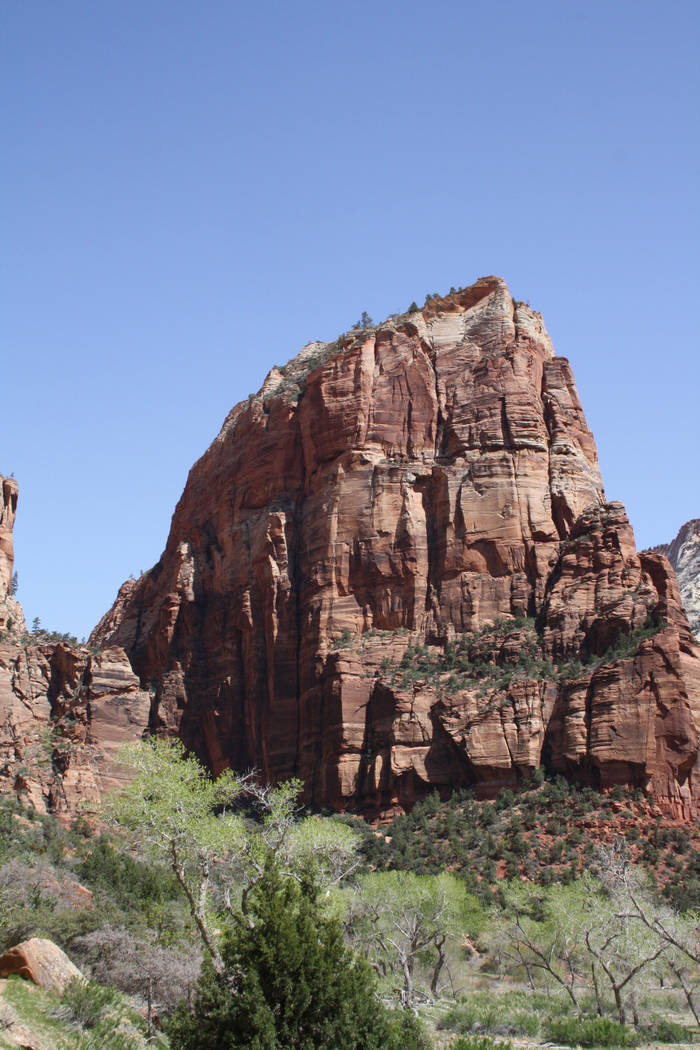Parts of Zion off-limits to climbers to protect falcons


Zion National Park is a favorite spring getaway for rock climbers from Southern Nevada, but before you head up there, be aware there are a few closures and changes in effect the next couple of months.
Some of the most popular climbing routes have been temporarily closed since March 1 due to the breeding and nesting of peregrine falcons, a bird of prey. Although peregrine falcons are found on every continent except Antarctica, they were formerly endangered and remain beloved by birdwatchers. Zion is a sanctuary for these birds, and the closures are meant to assure they can breed peacefully. When nesting is disturbed, an avian couple may abandon the site and not nest until the following year.
People love peregrines because of their amazingly fast flying, their aerial acrobatics, and the grace with which they do both. For the same reasons, peregrines historically have been the birds of choice for falconry, once reserved for the use of royalty. They eat mostly other birds and are often trained specifically to catch pest species such as pigeons and starlings around airports, where the latter endanger flights.
Nearly always they take the prey in flight — sometimes in hot pursuit, sometimes with a spectacular dive or “stoop” that knocks the prey out of the air. Peregrines have been timed diving at more than 200 mph! These raptors are usually 13-20 inches with wingspans between 31 and 48 inches as adults. The female usually lays three to four eggs, sometimes more, which are incubated for about 34 days. The females do most of the incubating, depending on the male to supply food. When born, the chicks are covered with white down, but in five to six weeks they are fully feathered and start flying. Even after the chicks fledge they usually stay with their parents for a few months learning how to survive on their own.
Cliffs that are closed to climbing include Angel’s Landing, Cable Mountain, The Great White Throne, Isaac, The Sentinel, Mountain of the Sun, North Twin Brother, Tunnel Wall, The East Temple, Mount Spry, The Streaked Wall, Mount Kinesava and the middle fork of Taylor Creek.
Once park wildlife biologists do a complete check, usually by late April or early May, cliffs that are not found in use for nesting will be reopened for climbing.
Where nesting takes place the climbing areas will be closed till about late July, after the chicks have fledged. Peregrine falcons were listed as endangered in 1970 under the Endangered Species Act. The main reason was the insecticide DDT, which made the eggs vulnerable and weak. The nation’s ban on DDT that became law in 1972, along with the captive breeding programs implemented, helped the peregrine falcons start to recover in North America. The species was de-listed in 1999.
Deborah Wall’s book “Base Camp Las Vegas: 101 Hikes in the Southwest” ($24.95, Imbrifex) is available on Amazon. She can be reached at deborabus@aol.com.
Directions
From Las Vegas, take Interstate 15 north about 125 miles to Utah Route 9 (Exit 16 – Hurricane/Zion National Park). Follow Route 9 east for 32 miles to Springdale and Zion National Park.
More information
For climbing information for a visit to Zion National Park, call 435-772-3256 or click here. For more in-depth information on peregrine falcons, click here.













